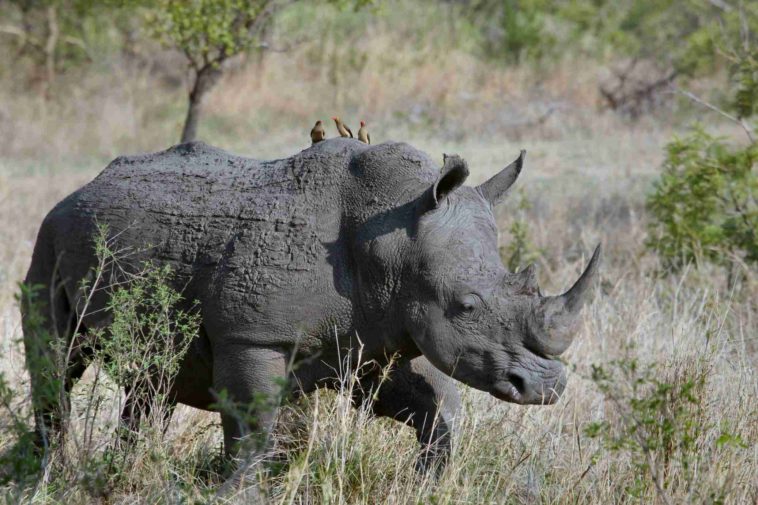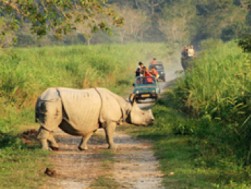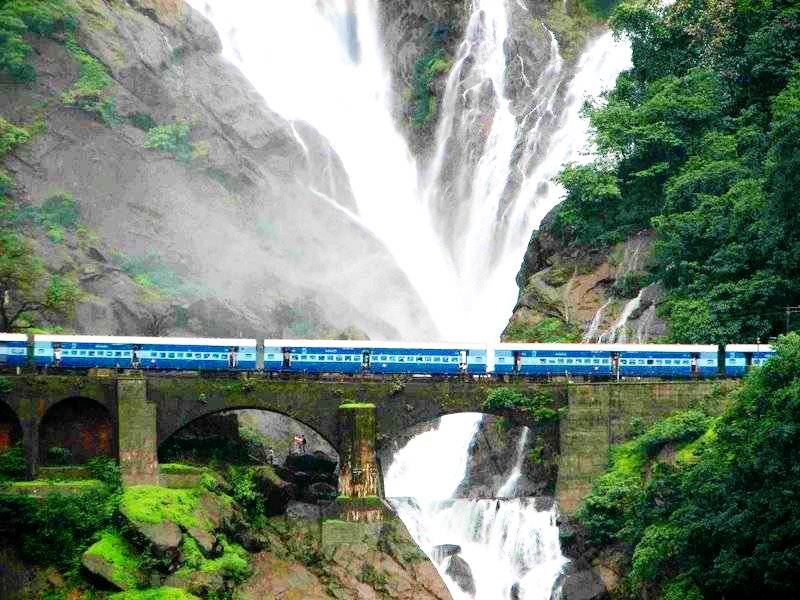There are people who like exploring places which have historic significant, some like exploring places with rich culture and heritage and then there are possibly the crowd which loves getting into the wild to explore the world of varied flora and fauna and we all together fall in the third category.
India’s geographic location and habitual climate has made it a place which showcases an abundance of flora and fauna. And if you are dying to witness this, then there is no better place than the ‘Kaziranga National Park’.
The Kaziranga National Park is divided into five ranges :
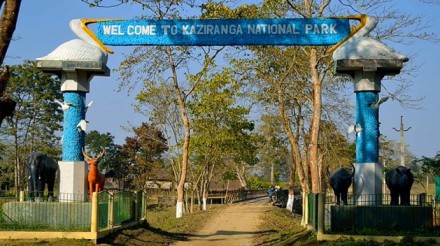
- Northern Range, Biswanath
- Burapahar, Ghorakati
- Western Range, Bagori
- Central Range, Kohora
- Eastern Range, Agoratti
The sanctuary is a proud owner of the world’s great one-horned rhinoceroses and is a World Heritage Site since the year 1985.
History of Kaziranga National Park

The history dates back to the year 1904, as a protected area, when ‘Mary Curzon’, the wife of then Viceroy of India ‘Lord Curzon of Kedleston’ visited the area.
After failing to see the sight of even a single one-horned rhinoceros, she urged to her husband to take urgent measures to protect the species of this area.
On 1st June, 1905, the Kaziranga Proposed Reserve Forest came into existence with an area of 232 square kilometres. Over the next three years, it further extended by 152 square kilometres to the banks of the Brahmaputra River. Finally in 1908, Kaziranga was a designated as a ‘Reserve Forest’.
It was re-designated as ‘Kaziranga Game Sanctuary’ in 1906 and remained under the same name until 1938, when hunting was prohibited and eventually visitors were allowed to enter the park.
It was renamed as ‘Kaziranga Wildlife Sanctuary’ in 1950 by P.D. Stracey, the forest conservationist.
In 1954, the Government of Assam passed the Assam bill, which imposed heavy penalties on rhinoceros poaching.
14 years later, the state government passed the ‘Assam National Park Ac of 1968’ declaring Kaziranga a designated national park.
The 430 square kilometres was given an official status by the Central Government in the year 1974.
Fauna
Kaziranga contains significant breeding population of whooping 35 mammalian species out of which 15 are threatened as per the IUCN Red List.
1. One-horned Rhinoceroses of Kaziranga
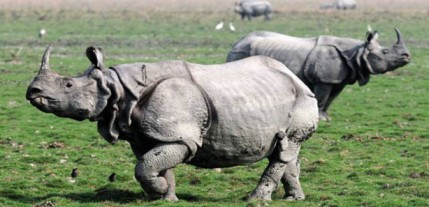
It is home to the world’s largest population of the Greater One-Horned Rhinoceros, Wild Asiatic Water Buffalo and Eastern Swamp Deer.
Herbivorous population includes Elephants, Gaur and Sambar. Small herbivorous includes the ‘Indian Muntjac’, Wild Boar and Hog Deer.
The One-Horned Rhinoceros, Royal Bengal Tiger, Asian Elephant, Wild Water Buffalo and Swamp Deer are collectively called as the ‘Big Five’ of Kaziranga.
2. Asiatic Water Buffalo

Source: kaziranganationalpark.com
3. Indian Barasingha
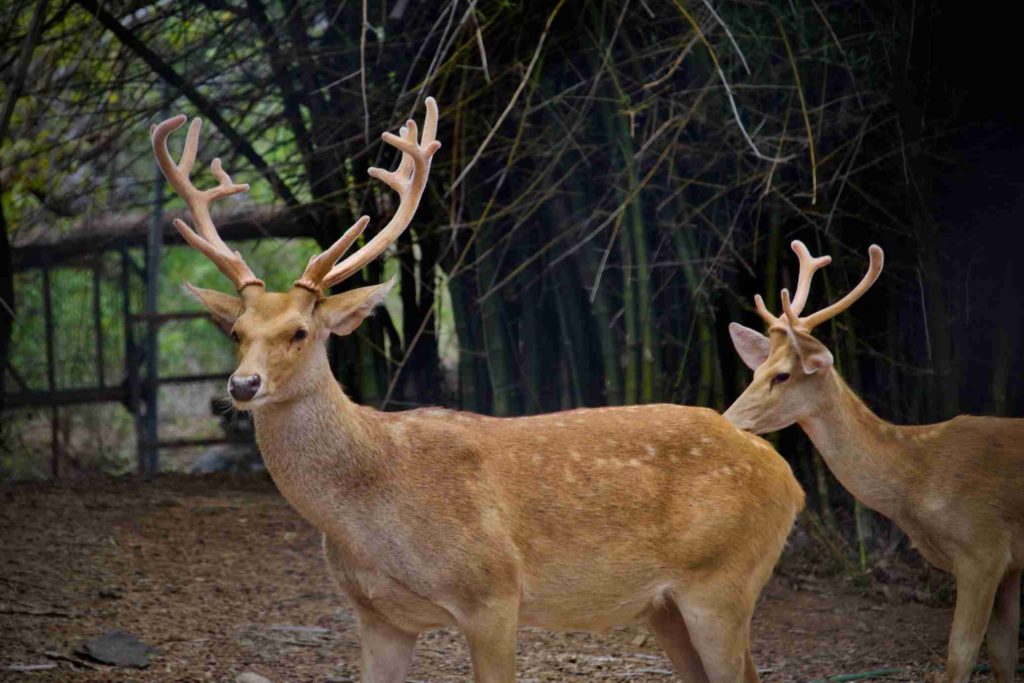
Source: sentinelassam.com
4. Royal Bengal Tiger
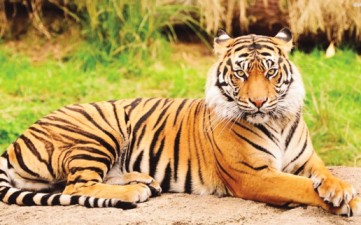
Kaziranga was proudly declared as a Tiger Reserve in 2006 and has highest density of tigers in the world. It even includes Jungle Cats, Fishing Cat and Leopard Cat.
Nine of the 14 primate species are found in the park which includes Assamese Macaque, Capped and Golden Langur and Hoolock Gibbon.
5. Golden Langur

Small mammals includes a long list which includes the rare Hispid Hare, Mongooses, Large and Small Indian Civet, Chinese and Indian Pangolin, Parti-coloured flying squirrels, Bengal Fox, Hog Badger, Golden Jackal and Sloth Bear.
Bird Population in Kaziranga National Park
Birdlife International has recognised Kaziranga as an ‘Important Bird Area’.
1. Red-Breasted Parakeet in Kaziranga

It is a home to varied migratory birds, water birds, predators, scavengers and game birds.
Birds such as Lesser-White Fronted Goose, Ferruginous Duck, Lesser and Great Adjutant, Black-Necked Stork and Asian Openbill Stork among others migrate from Central Asia during the winters.
2. Indian Roller at Kaziranga
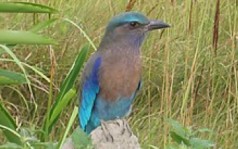
Game birds include the Swamp Francolin, Bengal Francolin and Pale-Capped Pigeon.
The list is very long in this department as it is home to even other families such as the Great Indian Hornbill, Old World Babblers, Weaver Birds, and Thrushes.
Reptiles:
Two of the largest snakes in the world, the Reticulated Python and Rock Python as well as the longest and most venomous snake in the world, the King Cobra have found their home in this park.
There are other snakes too such as Indian and Monocled Cobra, Russell’s viper and Common Krait.
You can even find monitor lizards and 15 species of turtles and one species of tortoise, the Brown Tortoise.
42 species of fish are also found in the area, including the Tetraodon.
Flora
Four main types of Vegetation exist in the park which is – Alluvial Inundated Grasslands, Alluvial Savanna Woodlands, Tropical Moist Mixed Deciduous Forests and Tropical Semi-Evergreen Forests.
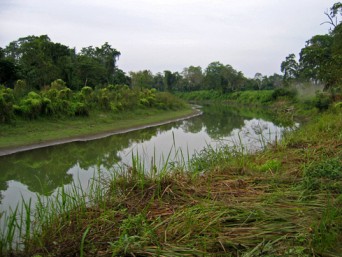
Grasslands and Deciduous Forests of Kaziranga
Common tall grasses are Sugarcanes, Spear Grass, Elephant Grass and Common Reed. There are scattered trees with dominant species including – Kumbhi, Indian Gooseberry, the Cotton Tree and Elephant Apple.
There are thick evergreen forests too containing trees such as Talauma Hodgsonil, Dillenia Indica and Garcinia Tinctoria among others.
There are various common trees and shrubs also present which represents a huge variety of flora. There are many different aquatic floras present in the lakes and ponds and along the river shores.
Things to do in Kaziranga National Park :
Source: kaziranga-national-park.com
Open Jeep Safaris in Kaziranga
Observing the wildlife, including birding is the main activity in and around the park. Guided tours by elephant and jeeps are also available which adds on to the thrill of exploring the wildlife rather in depth.
Hiking is prohibited in the area due to major chances of human-animal conflicts.
Four tourist lodges at Kohora and three tourist lodges outside the park is maintained by the Department of Environment and Forest, Government of Assam. These get sold out easily during the on-season.
Private lodges and resorts too are available outside the borders of the park.
Entry Fee: INR 100 (Indians); INR 650 (Foreigners)
Timings: Open 24 hours
Season: Winter season, which is from November to January, is the best season due to the weather and the temperature. The Park is closed during the monsoon season.
How to reach Kaziranga National Park?
There are two nearest airports, Guwahati International Airport and Jorhat Airport located at a distance of 217 km and 97 km respectively. You can easily hire a taxi or a cab or can also catch a state owned bus service or a private bus as they are cheaper than the taxis or cabs.
The nearest railway station is Furkating which is located at a distance of 75 km from the park. You can even get down at the Guwahati or the Jorhat railway station as they are major railways stations of the Northeast Railways, located at 240 km and 90 km respectively and further hire a taxi or a cab.
Welcome to Kaziranga National Park on NH 37
The main gate of the park is situated in a small town Kohora which lies on the National Highway 37 and is well connected to all the cities of the state.
Local transport services are also available from towns.
The connectivity through air, train and roads are well making it easier to access the Kaziranga National Park.
Recommended Story – Unesco World Heritage Sites In India


